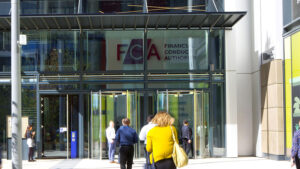By Pieter Staelens, the portfolio manager of the CVC Income and Growth fund
Analysts at JP Morgan recently predicted that the Bank of England might be required to raise policy interest rates as high as 7%, shortly after its decision to hike them to 5% – the highest level since April 2008 . This brought home the stubbornness of inflation in the UK, but persistent inflation is not solely a UK problem.
While the UK is faring worse than most with inflation at 6.7%, inflation across Europe stands at 4.9%, and the European Central Bank has responded in line with central banks globally to increase rates from a negative 0.5% to 4% in a little over a year.
As a result, investors accustomed to more than a decade of quantitative easing and ultra-low interest rates – many of whom hadn’t experienced inflation during their investing careers – have spent the past year adapting their portfolios to the realities of the new environment.
As fund managers continue to reallocate their portfolios accordingly, they face a mixed picture in the credit markets. On the one hand, rising base rates result in higher coupons, although those holding fixed-rate assets issued prior to the rate hiking cycle stand to lose out. Equally, while floating rate notes equate to higher coupon payments in line with base rates, the underlying borrowers now face significantly higher borrowing costs, raising the possibility that they won’t be able to repay their debts.
While the majority of investors are well-versed in these overall dynamics of credit markets, many continue to overlook the leveraged loan asset class, which at times of increased uncertainty and volatility, can offer investors of all profiles reliable income, attractive yields and, importantly, stability.
Leveraged loans are a form of corporate credit used by companies and private equity funds to finance M&A transactions. The asset class allows investors access to the debt of large-cap, blue-chip businesses. To put this in perspective, the average EBITDA for the borrowers within our portfolio is roughly similar to that of the S&P 500.
Now at approximately $1.5trn across Europe and the US, the leveraged loan market has grown significantly over the last five years, benefiting from the boom of private equity transactions. While loans are typically the preserve of institutional investors, vehicles such as investment trusts allow a broader range of investors access to the asset class.
See also: Investors expect double-digit returns amid market turbulence
In a rising rate environment, a key advantage of leveraged loans is that they are floating rate, with a coupon that rises in line with base rates. So, when rates rise, the interest due to the lender goes up, protecting the asset’s underlying value.
In contrast, most bonds have a fixed rate, meaning their value falls as interest rates rise. Loans offer investors a hedge against further rate hikes, whereas bonds often do not, leaving investors potentially exposed to duration risk.
With many underlying businesses struggling with the dual impact of reduced product demand and higher interest payments, there is an expectation that defaults will rise, which clearly presents a significant risk to investors’ portfolios.
However, an additional attraction of leveraged loans is that they are senior secured, giving them a senior position to unsecured bonds in the capital structure. This means that, in the case of default, holders of loans are higher up the queue to receive a pay-out than unsecured bondholders or lenders, as holders of Credit Suisse AT1 bonds discovered to their detriment earlier this year.
So, while the high-quality businesses that loans offer access to are well equipped to avoid defaults, loans generally offer investors a higher recovery rate if defaults occur. Default rates in the leveraged loan market have historically been low, sitting at 0.4% in 2022, while recovery rates are historically high, underpinning the downside protection offered by loans.
Finally, last year’s loan market sell-off presented an attractive buying opportunity with significant discounts on even the highest quality credits. This means that yields on loans are now extremely attractive as projected returns are boosted from buying the assets at a discount, which can help to generate capital growth on the portfolio.
See also: HSBC focuses on quality in fixed income to navigate volatility
Overall, loans are an essential investment in a volatile environment, providing investors with the possibility of capital appreciation without compromising on downside protection. As the recessionary threat continues to loom large and many assets remain volatile, leveraged loans can play the role of a stable allocation whilst also delivering attractive risk-adjusted returns.







